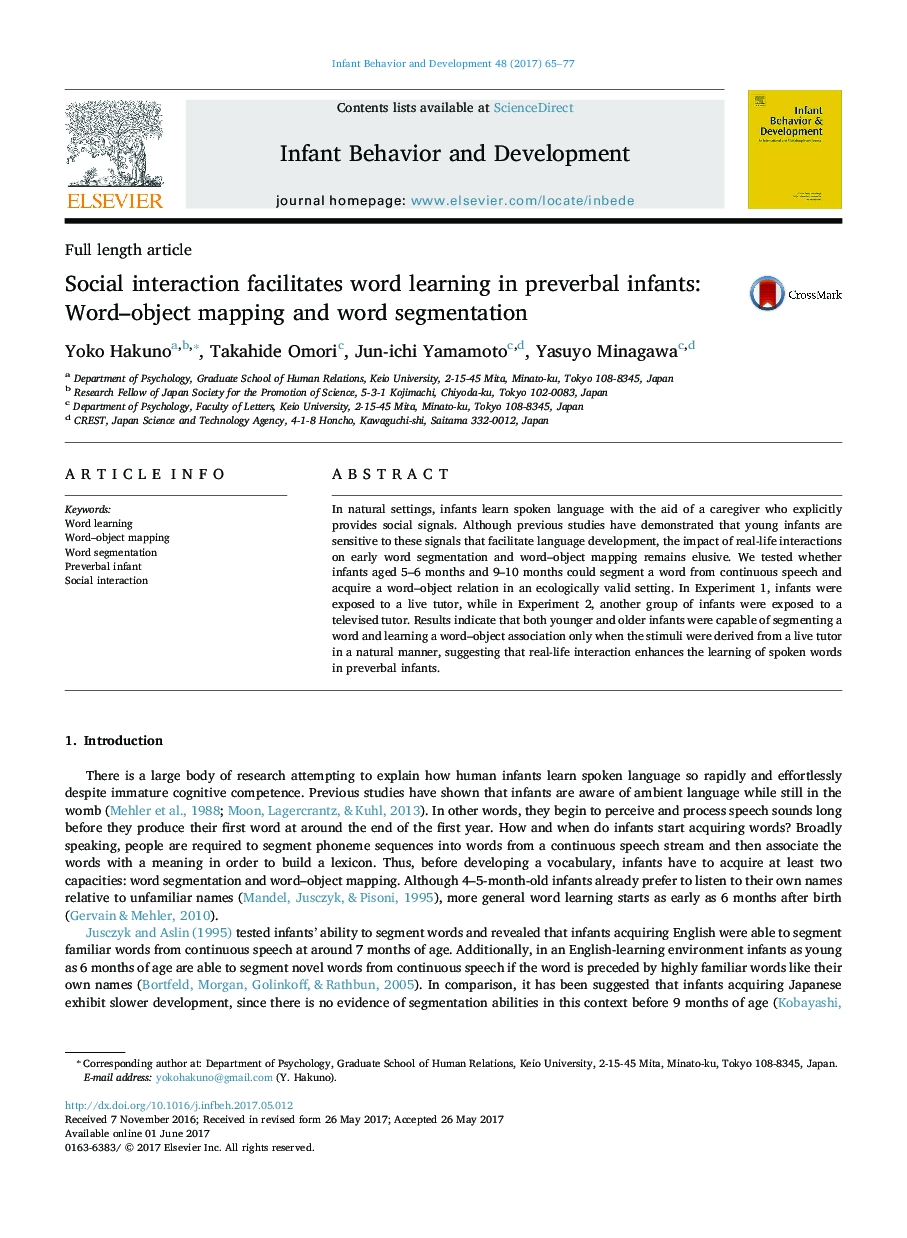| Article ID | Journal | Published Year | Pages | File Type |
|---|---|---|---|---|
| 5039807 | Infant Behavior and Development | 2017 | 13 Pages |
â¢We examined the effect of real life interaction on word segmentation and word-object mapping in 5- to 6-month-old and 9- to 10-month-old infants.â¢Both 5- to 6-month-old and 9- to 10-month-old infants learned a novel word only from a live tutor and not from a prerecorded, televised tutor.â¢Japanese infants were capable of segmenting words from continuous speech at around 5-6 months of age, which is earlier than previously thought.â¢It was the first study to reveal a crucial effect of social interaction on word learning in preverbal infants.
In natural settings, infants learn spoken language with the aid of a caregiver who explicitly provides social signals. Although previous studies have demonstrated that young infants are sensitive to these signals that facilitate language development, the impact of real-life interactions on early word segmentation and word-object mapping remains elusive. We tested whether infants aged 5-6 months and 9-10 months could segment a word from continuous speech and acquire a word-object relation in an ecologically valid setting. In Experiment 1, infants were exposed to a live tutor, while in Experiment 2, another group of infants were exposed to a televised tutor. Results indicate that both younger and older infants were capable of segmenting a word and learning a word-object association only when the stimuli were derived from a live tutor in a natural manner, suggesting that real-life interaction enhances the learning of spoken words in preverbal infants.
